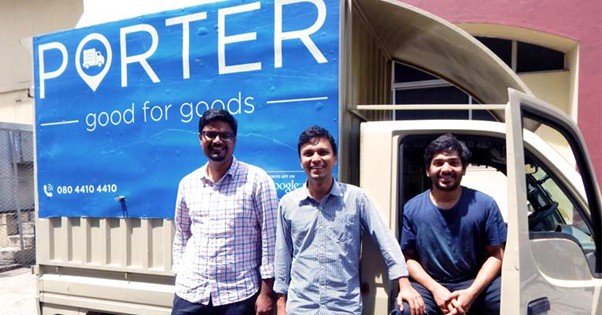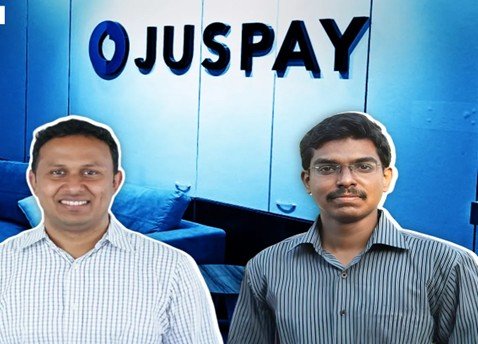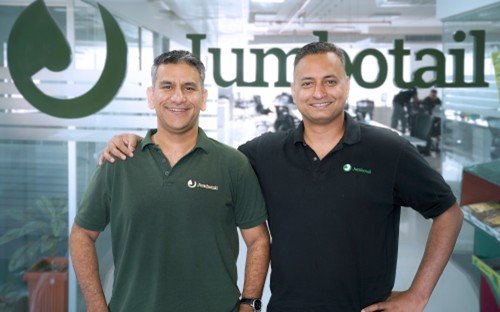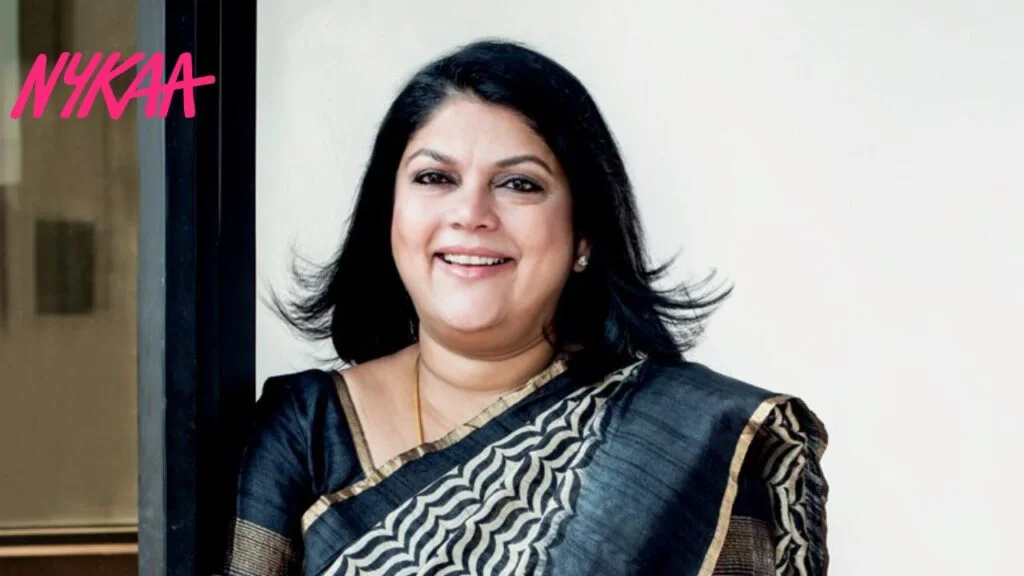Chapter 1: The Last Mile Problem (2014-2023) In the beginning, logistics in India’s metro cities wasn’t just fragmented; it was a chaos engine running on intuition, high fuel costs, and sheer hope. For a small business owner needing a tempo to shift $5,000 worth of goods across Bangalore, the process involved three phone calls, 45 minutes of negotiation, and absolutely zero guarantee of arrival time. This was the problem that Pranav Goel, Uttam Digga, and Vikas Choudhary set out to solve in 2014 with Porter. Their vision was simple: bring the Uber model to intra-city goods movement. They weren’t building a trucking company; they were building an intelligence layer that could match an atom (the load) with a molecule (the truck or two-wheeler) in real-time. The early years were a relentless, grinding test of unit economics. Porter’s innovation wasn’t just the app, but the asset-light model—partnering with existing truck owners and bike riders, digitizing their schedules, and optimizing their return trips, effectively turning a single-trip loss into a multi-trip profit. They prioritized MSMEs (Micro, Small, and Medium Enterprises), the backbone of the Indian economy, who paid immediately and provided recurring, predictable demand. This laser focus on small-scale, high-frequency B2B transactions created a fundamentally resilient cash flow structure, unlike peers chasing slow-paying large enterprises or high-burn consumer-only models. By 2023, the scale was impressive: 20+ cities, hundreds of thousands of registered drivers, and annual operating revenue soaring past $300 million. But the market had changed. Quick commerce giants were moving into last-mile logistics, and while their focus was tiny parcels, the sheer volume threatened to dilute the driver base. Porter needed to make a decisive move to solidify its leadership and prove it wasn’t just a great logistics company, but a genuine tech platform. Chapter 2: The Quantum Leap (Project Velocity, 2024) In late 2023, CEO Uttam Digga greenlit “Project Velocity,” a 12-month strategy designed to achieve profitability and a $1 billion valuation by mid-2025. The core of Velocity had three pillars: The year 2024 was defined by execution ruthlessness. The team narrowed its focus, slashing non-core marketing expenses and doubling down on driver onboarding and training. The results were visible in the financials. For the fiscal year ending March 2024, Porter managed to cut its net losses by 45%, even as revenue climbed by a staggering 56%. The unit economics had finally flipped decisively to positive. Chapter 3: The Series F and the Valuation Moment (May 2025) By the end of Q1 2025, the data was undeniable: Porter was profitable on an operational level across its major markets and had built a moat around its core business that was technologically impenetrable. They had redefined what it meant to move goods in India. No longer was it a transaction; it was a frictionless utility. The atmosphere in the Bengaluru headquarters was tense but electric. The Series F round, initially scoped at $150 million, grew to $200 million, attracting the attention of global investment heavyweights like Kedaara Capital and Wellington Management. They weren’t just buying growth; they were buying proven financial discipline in a notoriously cash-hungry sector. On May 8, 2025, the news broke. Porter had closed its Series F, entering the coveted unicorn club with a valuation between $1.1 and $1.2 billion. It was India’s second unicorn of the year, a moment that heralded not just a financial victory, but a cultural shift. The press release was issued, celebrating the technological platform that empowered over 300,000 gig workers and served over 3 million customers monthly. The founders, often humble and execution-focused, finally allowed themselves a moment of reflection. “We didn’t set out to be a billion-dollar company,” Uttam Digga said during the celebratory huddle. “We set out to ensure that the small store owner, the vendor, and the driver were treated with transparency and efficiency. The valuation is simply the market recognizing the sheer economic value of taking a broken system and making it intelligent. We are not just delivering parcels; we are delivering economic empowerment, one perfectly routed trip at a time.” The Series F capital was immediately earmarked for the next great scaling challenge: expanding into 20 new Tier 2 and Tier 3 cities, and investing heavily in the infrastructure to support over 1 million gig workers, solidifying Porter’s position as the ubiquitous, technology-first logistics layer of India. The billion-dollar delivery was complete, but the true journey of scaling had only just begun. Disclaimer: We do not claim ownership of any data, images, or thoughts shared on this article. Content is based on publicly referenceable data and provided for informational purposes only and the. Any views expressed belong to their respective owners. We strive for accuracy but disclaim liability for reliance on the content.
Juspay: The Architects of the Invisible From Orchestration to Unicorn
Chapter 1: The Inflection Point The air in Juspay’s Bengaluru headquarters in late 2024 felt heavy, thick with the silence that follows seismic change. For years, Juspay had been the invisible engine of India’s digital commerce, the elegant, high-reliability layer ensuring that transactions for giants like Amazon, Google, and Microsoft never failed. They were the premier Payment Orchestrator, the central nervous system routing billions of dollars seamlessly. But the ground had shifted. Major payment aggregators, seeking tighter control over their merchant relationships, had started to disengage from orchestration platforms. It was a strategic challenge—a move that questioned whether Juspay was truly essential infrastructure or a dispensable middle layer. Co-founder and CEO Vimal Kumar, however, saw not a threat, but the ultimate validation of their core belief: complexity needed a single, elegant solution. “Our mission was never just about routing,” he told the team in January 2025. “It’s about making payments an accessible, open utility, like the internet itself. If they want to control the gateway, we will build the highway and the operating system that runs every vehicle on it.” The goal wasn’t just survival; it was acceleration. The target: Unicorn status by the end of Q1 2025, fueled by an uncompromising strategy: global expansion, regulatory mastery, and total technological dominance driven by AI. Chapter 2: The Two Pillars of Scale Juspay’s counter-strategy focused on two audacious bets: the global deployment of Hyperswitch and the integration of the Nexus AI layer. Hyperswitch: The Open-Source Global Play Hyperswitch, Juspay’s open-source payment switch, became the spearhead of their international push. Vimal, along with co-founder Ramanathan RV, believed that in an increasingly fragmented global payments landscape, the market craved an open, transparent, and developer-friendly solution. Hyperswitch wasn’t just a product; it was a manifesto for interoperability. This open-source philosophy resonated immediately with fintech startups and legacy banks outside of India, particularly in complex regions like Southeast Asia and Latin America. By offering a customizable, no-code engine that could connect to any payment processor, currency, or local method, Juspay transformed from a niche Indian solution into a global infrastructure provider. Nexus AI: The Intelligence of 99.999% Internally, the team introduced Nexus AI, an advanced machine learning engine designed to optimize every millisecond of a transaction lifecycle. It moved beyond simple rules-based routing. Nexus AI leveraged real-time issuer health data, historical consumer behaviour, and even contextual data (like time of day or device type) to predict the highest probability route for success. The results were transformative. Merchants using the enhanced orchestration platform reported a 5-10% improvement in transaction success rates—a massive gain for businesses processing millions of transactions daily. This uplift in conversion, coupled with the system’s legendary “five nines” (99.999%) reliability, proved Juspay’s infrastructure wasn’t a choice; it was a competitive necessity for any enterprise focused on revenue retention. Chapter 3: Mastering the Ecosystem The regulatory piece fell into place perfectly, validating their domestic resilience. In early 2025, after months of rigorous audits and technical reviews, Juspay received the coveted Payment Aggregator (PA) license from the Reserve Bank of India. This license fundamentally changed their game, allowing them to offer end-to-end payment acceptance, directly competing in the full-stack space while maintaining their orchestration layer superiority. This pivot wasn’t without its challenges. Sheetal Lalwani, Co-founder and COO, was instrumental in steering the compliance and global expansion efforts. Her team deftly managed the simultaneous expansion across APAC, the UK, and North America, ensuring the platform adhered to dozens of disparate regulatory frameworks, from PCI DSS 4.0 standards to local data residency laws. The market took note of their tenacity. Juspay had not only absorbed the loss of major partners but had used the moment to strategically upgrade their offering, transforming a business challenge into an unprecedented growth engine. The sheer volume was staggering: they were consistently processing over 200 million transactions daily, representing an Annual Total Processed Volume (TPV) of over $900 billion. Chapter 4: April 7th, 2025: The Leap The whispers started in March, but the confirmation arrived on April 7, 2025. Private Equity powerhouse Kedaara Capital stepped in to lead the Series D funding round, joined by existing believers SoftBank and Accel. The round secured a substantial injection of capital—$60 million—but the number that truly mattered was the valuation. The successful fundraise valued Juspay at over $1 billion, officially crowning them India’s first fintech unicorn of 2025. The news wasn’t just a victory for the founders; it was a powerful statement about the resilience of core infrastructure technology. Juspay hadn’t built a consumer app or a flashy frontend; they had built the complex, robust plumbing that made everyone else’s flash work. Vimal, addressing the company after the announcement, kept the focus forward: “This valuation is a checkpoint, not a destination. Our true value lies in the billions of successful transactions we enable, the revenue we recover for our merchants, and the open ecosystem we are creating globally. We skipped the ‘Gazelle’ phase and went straight to Unicorn because we never stopped building the future of payments. Now, we use this capital to accelerate the development of HyperCredit, embed lending capabilities, and make our AI layer truly sentient.” Juspay’s journey to the unicorn club in 2025 wasn’t a sprint but a marathon won by a deep commitment to first-principles engineering. They proved that in the chaotic world of digital finance, the greatest scale comes not from chasing trends, but from building the unshakeable foundation beneath them. They are the architects of the invisible, ensuring that the magic of digital commerce happens every single time.
The Kirana Renaissance: Jumbotail’s Story to a $1 Billion Valuation
The year is 2025. The air in Bengaluru, a city that runs on code and chai, crackles with the news. On June 30th, Jumbotail—the B2B e-commerce and New Retail platform for food and grocery—closed a landmark $120 million Series D funding round, led by SC Ventures, the innovation arm of Standard Chartered Plc. The news wasn’t just about the dollar amount; it was the final, definitive stamp: Jumbotail was officially India’s newest Unicorn, valued at over $1 billion. It had taken a decade, but the ‘Kirana Renaissance’ they championed had arrived. This was no overnight sensation; it was a methodical, principle-driven scaleup story. Co-founders S. Karthik Venkateswaran and Ashish Jhina had spent years in the trenches of the Indian Army and Silicon Valley, respectively. Their mission, forged in a Stanford MBA classroom, wasn’t to compete with the humble kirana store, but to arm it. They saw not a fragmented, struggling ecosystem, but the resilient, $600-billion-plus backbone of Indian retail—a backbone that simply lacked modern tools. Phase I: The First Principles of Scale (2015-2021) The early years were defined by building an infrastructure that seemed insane to the VCs of the time: a full-stack, tech-powered supply chain. While others chased scale-at-any-cost, Jumbotail chased capital efficiency and operational excellence. Their proprietary ‘GoldenEye’ Retail Operating System was a testament to this, giving a small shopkeeper the power of a modern supermarket manager: digital invoicing, inventory tracking, demand forecasting, and a crystal-clear P&L. “We solved logistics first,” Karthik often said. “If the product doesn’t arrive on time, in full, and at the right price, nothing else matters.” Their in-house logistics, initially a source of investor skepticism, became their competitive moat. By 2021, Jumbotail boasted a 98% order fill rate and 95% on-time delivery—numbers unheard of in the fragmented B2B grocery space. This reliability built trust with the small and medium kiranas—a trust that was the bedrock of their next, most crucial step. Phase II: The Credit Multiplier (2022-2024) By the beginning of 2022, the e-commerce platform had gained traction, serving tens of thousands of retailers. But the founders knew the deepest pain point of the kirana owner: working capital. The traditional kirana was constantly beholden to wholesalers and distributors, caught in a tight, often exploitative, cash cycle. This is where Jumbotail Capital, their embedded fintech platform, became the scaleup catalyst. Leveraging transactional data from the e-commerce platform—every order, every payment, every restock—they created a proprietary credit scoring model. They partnered with lending institutions, offering small, collateral-free credit lines right in the app. This wasn’t just an add-on; it was an enabler. A kirana could now order more stock, increase its range, and capture more sales without worrying about immediate upfront payment. This boosted the average order value (AOV) and the purchase frequency of their retailers, creating a virtuous, compounding loop. By late 2024, Jumbotail Capital was responsible for a quarter of the company’s overall revenue, a powerful demonstration of product-market fit in a financial services-starved sector. Phase III: The Leap to Unicorn Status (H1 2025) The final push for unicorn status came with a strategic, industry-defining move in the first half of 2025: the acquisition of Solv India. Solv, a B2B commerce and financial services platform incubated by the funding round’s lead investor, SC Ventures, brought two critical elements to the table: The Series D funding, led by SC Ventures and joined by existing backers like Artal Asia, was the financial validation of this strategic vision. The capital infusion wasn’t for vanity; it was explicitly earmarked for AI-native solutions and talent acquisition in Decision Science and Machine Learning. The goal was to cement their leadership by building the most efficient and lowest-cost supply chain in the country—an AI-powered gateway to India’s mass-market consumption. On June 30, 2025, the internal email announcing the unicorn milestone went out, signed by both Karthik and Ashish. It wasn’t just a celebration of a $1 billion valuation; it was a celebration of the hundreds of thousands of small businesses they had empowered. The true scaleup was never about the valuation multiple; it was about the impact multiple—empowering a million retailers to serve 400 million middle-income Indian consumers. The Kirana Renaissance was finally an economic reality. Disclaimer: We do not claim ownership of any data, images, or thoughts shared on this article. Content is based on publicly referenceable data and provided for informational purposes only and the. Any views expressed belong to their respective owners. We strive for accuracy but disclaim liability for reliance on the content
The Apex of Paws: Drools’ Leap to Unicorn Status (May 2025)
The air in the Bengaluru boardroom was thick with anticipation. It was a crisp May morning in 2025, and outside, the Indian pet care market was booming—a landscape the company, Drools, had spent over a decade shaping. The team, led by a calm but visibly energized Founder, Fahim Sultan, and the dynamic CEO, Dr. Shashank Sinha, was not here for another market update. They were here for the final signature on a deal that would catapult their humble domestic success into a global financial landmark. Chapter 1: The Pre-Flight Checklist (The $600M Valuation) Drools’ journey from a division of the IB Group to an independent entity was the perfect Scaleup Story. It wasn’t about a sudden viral product; it was about unwavering execution, vertical integration, and a deep, scientific understanding of pet nutrition. By 2024, they were already a formidable force. The previous year’s Series B round of $60 million from L Catterton—the private equity arm with a luxury goods lineage—had been the formal “pre-flight” check. It had validated their operational model: six fully-owned manufacturing units, a colossal 1.6 million square feet of warehousing, and an incredibly lean supply chain. This investment had been strategically deployed to expand manufacturing capacity and turbocharge their omnichannel distribution, reaching over 40,000 retail outlets while simultaneously dominating the Amazon pet food category with their diverse portfolio (Pure Pet, Meat Up, Canine Creek). The growth metrics were undeniable: revenue had seen a stunning 50% jump in FY24. But the scaleup wasn’t just domestic. Drools was already a leading exporter, shipping its science-backed nutrition to 22 countries across the Middle East, Africa, and Asia-Pacific. The goal was 50 countries by 2025. This global ambition, coupled with India’s exploding pet-parent culture (driven by Gen Z and millennials who treat pets as family), made Drools a high-potential asset. Chapter 2: The Strategic Pivot (The Unicorn Catalyst) The traditional path to unicorn status in the D2C world often involves a massive, dilutive Series C funding round. Drools chose the path of strategic validation. The catalyst for the $1 billion valuation was the quiet, calculated entry of a global behemoth: Nestlé S.A. The Swiss consumer goods giant, whose global pet-care division, Purina, was a major revenue pillar, sought a strategic foothold in India’s hyper-growth market without the risk of a full-scale operational acquisition. In late May 2025, the news broke: Nestlé had acquired a minority stake in Drools. This was a masterclass in scaleup strategy. Chapter 3: The Impact and The Future (A New Apex) The immediate impact was electric. The unicorn status was a victory for the entire domestic pet care ecosystem. But for Drools, it was a platform, not a finish line. The new capital influx wasn’t for mere survival; it was for doubling down on innovation and technology. The scaleup plan for the rest of 2025 was clear: The final meeting adjourned not with loud cheers, but with a quiet, confident resolve. Drools hadn’t just reached a number; they had executed a strategic masterpiece. They had turned a commodity business into a high-growth, technology-enabled consumer brand, validated by the world’s best. The story of Drools becoming a unicorn in 2025 was the definitive tale of how a local champion, focused on product, process, and partnership, scaled its way to the top of the global pet food chain. The Apex of Paws had been reached, and the world was now ready to pay attention to India’s home-grown pet care revolution. Disclaimer: We do not claim ownership of any data, images, or thoughts shared on this article. Content is based on publicly referenceable data and provided for informational purposes only and the. Any views expressed belong to their respective owners. We strive for accuracy but disclaim liability for reliance on the content
Unveiling the Ascendancy: The Epic Saga of Scalenut’s Rise in the Digital Realm
The Rise of Scalenut The rise of AI-driven tools has irrevocably transformed the digital landscape. Amidst the tumultuous shift towards accelerated digitalization, spurred initially by the events of 2020, India became a crucible for innovative SaaS solutions. It was against this backdrop of rapid technological adoption that Scalenut emerged, not just as a tool, but as a revolutionary force poised to redefine the future of content marketing and Search Engine Optimization (SEO). At the end of 2020, as businesses fought to survive and expand their reach in an increasingly virtual world, the demand for high-quality, scalable content surged. Recognizing that content was the indispensable currency of the digital age, Scalenut was conceived with the mission to empower businesses to tell better stories, build sustainable brands, and, critically, achieve predictable organic growth. The Founding Visionaries and Early Trajectory At the helm of Scalenut stood the three visionary co-founders: Gaurav Goyal, Mayank Jain, and Saurabh Wadhawan. With a shared passion for leveraging AI to solve real-world marketing challenges, this dynamic trio established the company’s core philosophy: unifying an entire SEO and content workflow into a single, intuitive platform. The initial success validated their vision. By early 2022, Scalenut had successfully launched its SaaS platform for public use, experiencing a remarkable 10X revenue growth in the following months. This rapid traction led to a significant $3.1 Million seed plus funding round in 2022, led by Saama Capital and Amit Singhal (Former Senior VP of Google and Head of Google Search). This investment was a clear validation of their strategy, fueling an expansionary focus on key international markets, particularly the US and UK. The company successfully shifted from an AI-enabled content marketplace concept to a pure-play, all-in-one AI-SEO platform. Pioneering Innovation: The GEO Ecosystem By 2025, Scalenut has evolved far beyond a simple AI writer, transforming into an end-to-end Generative Engine Optimization (GEO) platform—a critical shift in a world dominated by Google’s Search Generative Experience (SGE) and large language models (LLMs). The core of its success lies in its unwavering commitment to innovation, specifically focusing on building content that is “Built for a prompt-first world, Indexed by AI engines, and optimized to win across Google, ChatGPT, and more.” Key features that define Scalenut’s 2025 platform include: Navigating the AI Age and Overcoming Adversity The journey to an all-in-one GEO platform was fraught with the challenges inherent in a hyper-competitive, rapidly evolving market. Scalenut faced the complexities of talent acquisition in a specialized AI niche and the daunting task of constantly building a new category in the SaaS space while competing with established giants like Semrush and AI-writing specialists like Jasper and Surfer SEO. However, its focus on unifying the entire SEO workflow—from research and planning (Topic Clusters, Keyword Planner) to creation (Cruise Mode) and optimization (Content Optimizer, Fix-It)—gave it a distinctive competitive advantage. This consolidation of features, combined with an aggressive focus on “AI Visibility,” positioned Scalenut as a strategic growth partner, not merely a cost-cutting tool. This resilience and adaptability, honed during the initial pandemic-era digital boom, prepared the company for the even greater seismic shift brought by generative AI. Building a Thriving Ecosystem and Charting the Future Central to Scalenut’s growth is its commitment to its thriving community. Through the Scalenut Community and in-depth Bootcamps, the company fosters a culture of collaboration, knowledge sharing, and user-centric development. The continuous feedback loop from its users drives the meticulous crafting of new features, ensuring the platform truly meets the evolving needs of content creators, SEO strategists, and agencies worldwide. As Scalenut charts its course for the future, its vision remains clear: to create the most powerful SEO and content marketing platform the world has ever seen. The company remains steadfast in its dedication to: In a hyper-digital, prompt-driven world, Scalenut stands not only as a testament to the power of vision and perseverance but also as a definitive leader in the Generative Engine Optimization space. Its evolution from a managed marketplace to a unified AI-SEO platform has reshaped the content marketing landscape. With its eyes set on establishing unparalleled AI visibility for its users, Scalenut continues its unwavering quest to empower creators and marketers globally, redefining the boundaries of what is possible in the age of intelligent search. Disclaimer: We do not claim ownership of any data, images, or thoughts shared on this article. Content is based on publicly referenceable data and provided for informational purposes only and the. Any views expressed belong to their respective owners. We strive for accuracy but disclaim liability for reliance on the content.
The Nykaa Odyssey
Nykaa’s Blueprint for Dominance: The Omnichannel, Content-Driven Strategy Redefining Indian Retail Nykaa, operated by FSN E-Commerce Ventures Ltd., is more than just an e-commerce platform; it is a meticulously constructed omnichannel ecosystem that redefined how the modern Indian consumer, primarily women, engages with beauty and lifestyle products. Founded by former investment banker Falguni Nayar in 2012, Nykaa seized the first-mover advantage in a fragmented beauty and personal care (BPC) market, building a profitable and scalable model anchored on authenticity, curation, and content. The company’s long-term strategy for FY26-FY30 is now focused on deepening its BPC leadership, engineering a turnaround in its fashion vertical, and aggressively leveraging technology to penetrate Tier 2+ cities. Phase I: The Foundation Building Trust Through the Inventory Model Nykaa’s initial success was built on a bold deviation from the common marketplace model prevalent in Indian e-commerce. It adopted an inventory-led model where it purchases products directly from brands or their authorised distributors. This single strategic choice solved the biggest trust deficit in the market: product authenticity. Curation and Authenticity as the Moat In an era when counterfeit beauty products were a significant concern, Nykaa’s inventory model served as a powerful Competitive Moat. It guaranteed that every product—from international luxury brands like Estée Lauder and MAC to popular domestic lines—was 100% genuine. This commitment to quality allowed Nykaa to forge deep, exclusive partnerships with over 8,600 brands and over 200,000 products, granting it a dominant market share of around 30% in India’s online BPC market. Content, Community, and Engagement Unlike traditional transactional platforms, Nykaa understood that beauty is a high-involvement, educational category. Its early marketing was a content masterclass: Phase II: The Omnichannel Imperative and Brand House Scaling Recognising the inherent “touch and feel” nature of beauty products, especially in the premium and luxury segments, Nykaa strategically transitioned to an omnichannel model to create a seamless customer journey. The Brick-and-Mortar Strategy By the end of FY25, Nykaa had expanded its physical retail network to 237 stores across 79 cities, categorised into formats like Nykaa Luxe (premium brands) and Nykaa On Trend (curated bestsellers). This physical presence serves multiple critical functions: The House of Nykaa: Margin Expansion A critical component of Nykaa’s profitability is its House of Nykaa portfolio—its own private labels. This strategy serves a dual purpose: filling white spaces in the market and capturing higher profit margins. Phase III: The FY2026-FY2030 Growth Playbook Nykaa’s current and future strategy is centered on scaling its platform, expanding its reach, and leveraging its data advantage. 1. The Quick Commerce and Hyper-Local Penetration Nykaa is aggressively entering the quick commerce space with its ‘Nykaa Now’ venture, promising delivery within 30-120 minutes in a growing list of metro cities. This move directly addresses the consumer demand for immediacy in daily essential BPC items and is supported by: 2. AI and Personalisation to Drive Conversion Nykaa is integrating over 40 Generative AI (GenAI) initiatives across its business in 2025. This technology is the next frontier for enhancing the customer experience: 3. Fashion Turnaround and Premiumisation The Fashion vertical, which historically lagged in profitability, is under a focused mandate to scale up and improve margins. The strategy involves a clear curation mandate, moving away from a mass-market approach to focus on premium, trend-conscious consumers. 4. International Expansion While India remains the core market, Nykaa is cautiously building a global footprint. The immediate focus is on the GCC (Gulf Cooperation Council) market through a partnership with the UAE-based Apparel Group. This expansion leverages the existing appeal of Nykaa’s curated brands and the high discretionary spending power in the region. Conclusion: A Vision for Sustainable, Profitable Growth Nykaa’s journey exemplifies a masterful blend of brick-and-mortar retail principles and cutting-edge digital technology. Falguni Nayar’s vision was not simply to sell products, but to build an ecosystem that instills confidence, educates the consumer, and assures authenticity. By controlling the supply chain (inventory model), engaging customers through rich, educational content, and creating a seamless omnichannel experience, Nykaa has established a powerful barrier to entry for competitors. Looking ahead to FY2030, Nykaa is positioned to capitalize on India’s burgeoning discretionary spending. The twin engines of high-margin, content-led BPC leadership and a scaled, curated Fashion platform, buttressed by the operational efficiencies of AI and quick commerce, form the strategic blueprint for continued, profitable market dominance. Nykaa’s long-term success hinges not just on transactional growth, but on its ability to remain the aspirational and trusted beauty destination for every Indian woman. Disclaimer: We do not claim ownership of any data, images, or thoughts shared on this article. Content is based on publicly referenceable data and provided for informational purposes only and the. Any views expressed belong to their respective owners. We strive for accuracy but disclaim liability for reliance on the content.
The Symphony of Understanding
“The journey of a thousand miles begins with a single step.” Uniphore: Orchestrating the Future of Customer Experience with Conversational AI In a world increasingly awash with raw data, one crucial, yet often overlooked, element holds the key to true business intelligence: human conversation. This fundamental realization—that conversations, brimming with emotions, intent, and context, hold the deepest secrets to understanding the customer journey—gave birth to Uniphore. Emerging from the innovative corridors of the Indian Institute of Technology Madras, Uniphore was founded to fundamentally change the way businesses “hear,” moving beyond merely listening to words to deciphering the complete symphony of human communication that shapes every customer interaction. The Genesis and the Inflection Point: Finding a New Voice The roots of Uniphore trace back to 2008, when two visionary minds, Umesh Sachdev and Ravi Saraogi, began with a small call center venture focused on voice-based internet services for rural Indian communities. This initial experience was pivotal, exposing them firsthand to the limitations and inefficiencies of traditional customer interaction methods. It quickly became clear that simply managing calls wasn’t enough; the real value lay in mining the conversations themselves. This realization marked the inflection point for Uniphore. They recognized that customer interactions went far beyond simple spoken words. The founders envisioned a platform capable of analyzing a holistic set of data points: spoken text, chat transcripts, video cues, and, crucially, emotional state. Initially, the technological road was challenging. While the company collaborated with early firms specializing in established English and European language speech recognition, their ultimate goal was to serve the linguistically vast and complex Indian market, with its myriad of dialects and regional variations. This necessitated painstaking adaptation and the arduous task of building proprietary, accurate speech recognition models from the ground up, a process fraught with technical hurdles but essential for deep market penetration. This early commitment to solving multilingual, multi-channel complexity cemented their unique value proposition. Redefining Interaction: The Power of Multimodal Conversational AI The limitations of traditional Customer Experience (CX) methods, such as periodic surveys and basic text-to-speech tools, were stark. These methods captured only a limited snapshot, entirely missing the vital emotional nuances—the tone, the hesitations, the underlying frustration or satisfaction—that truly define a customer’s state. Uniphore stepped in to solve this gap, ushering in a new era of CX powered by Conversational AI. This technology leveraged breakthroughs in speech recognition and Natural Language Processing (NLP), transforming how customer interactions were handled. The core approach involves: This multichannel, multimodal approach is the signature strength of Uniphore. By integrating voice, text, and emotion analysis (affective computing), the platform delivered an unparalleled, all-round comprehension of customer feelings and intent, effectively turning every customer interaction into a symphony of actionable data. The AI-Human Duet: The Co-Pilot Strategy Uniphore’s vision for the future of CX isn’t about complete automation; it’s about intelligent augmentation. Their philosophy is centered on the concept of the “AI Co-pilot,” a powerful tool designed not to replace human agents but to enhance and elevate their performance. This AI-Human duet allows for a dramatically improved service model: Furthermore, the continuous speech analytics function serves as an invaluable training tool, revealing gaps in agent skills and inconsistencies in service delivery, which are then used to refine training modules. Global Ambition and Strategic Customization Recognizing that CX challenges are unique to every sector, Uniphore astutely avoided a one-size-fits-all approach. Instead, they offered customized, industry-specific solutions that directly address the core pain points of large organizations: To solidify its position and scale its reach, Uniphore pursued strategic alliances with technology behemoths and global systems integrators. This extended ecosystem enabled more seamless customer adoption and broader market coverage. The measurable values delivered by the platform, including significant reductions in operational costs and demonstrable increases in sales productivity, reinforced the business case for adopting Uniphore’s technology. Uniphore’s Competitive Edge: Standing Out in the Throng In the fiercely competitive landscape of Conversational AI, Uniphore secured its leadership position through several unique and defensible strengths: A Glimpse into Tomorrow: Building a Brighter Future The future of Conversational AI, as envisioned by Uniphore, is a relentless push toward innovation. This future involves affective computing (emotion reading), deeper contextual understanding for hyper-personalization, and Natural Language Generation (NLG) so smooth it is indistinguishable from human speech. Uniphore’s long-term objective is to cement its position as the undisputed global leader in this transformative field. This is being pursued through an aggressive international expansion strategy, involving localization efforts to fit regional peculiarities and enabling the platform to incorporate a constantly growing number of languages and dialects. Ultimately, Uniphore’s journey is a powerful demonstration of how innovation, technological persistence, and an unwavering focus on the human element of communication can revolutionize an entire industry. By fostering a harmonious collaboration between AI and human agents, Uniphore is not just automating customer service; it is forging deeper, emotionally intelligent customer bonds and securing a clear competitive edge for its partners in the years to come. How might this increased emotional intelligence in AI shape the long-term relationship between brands and consumers? Disclaimer: We do not claim ownership of any data, images, or thoughts shared on this article. Content is based on publicly referenceable data and provided for informational purposes only and the. Any views expressed belong to their respective owners. We strive for accuracy but disclaim liability for reliance on the content.
Lenskart 2.0: The AI-Powered, Globally-Scaled Eyewear Colossus in 2025
The transformation of the Indian eyewear industry, initially spearheaded by Peyush Bansal and Amit Chaudhary starting in 2010, has reached a new, profound inflection point by 2025. Moving far beyond their initial success in streamlining an antiquated retail process, Lenskart has cemented its position as a genuine technological and operational giant. The company has not only achieved critical financial milestones but has aggressively deepened its commitment to AI-driven personalization and global full-stack manufacturing. In 2025, Lenskart successfully transitioned from a domestic market disruptor to a global eyewear colossus, fundamentally redefining the core definition of eye care and style worldwide. The Genesis and Foundational Disruption The eyewear market of 2010 was characterized by fragmentation and customer inconvenience. The journey involved tedious separate visits to medical professionals and physical stores that offered limited, high-priced, and often outdated selections. Recognizing this colossal market gap, the founders of Lenskart embarked on a mission to transform eyewear from a costly medical necessity into an affordable, fashionable accessory accessible to everyone. Their initial digital innovations proved foundational: The Omnichannel Apex: Integrating Scale and Experience Lenskart’s enduring competitive edge lies in its harmonious omnichannel strategy, recognizing that eyewear, as a fitting-dependent medical-retail product, requires both digital convenience and physical assurance. The Network Effect and Trust The expansion of its physical store network, initiated in 2015, has accelerated dramatically. By the end of FY25, Lenskart operates over 2,700 stores worldwide, with over 2,000 in India alone. This extensive footprint serves multiple, integrated purposes: The New Digital Frontier: Hyper-Personalization with AI and AR In 2025, Lenskart’s technology has matured into an intelligent platform focused on hyper-personalization, utilizing AI to overcome previous limitations and create a truly unique shopping experience. AI as the Styling Co-Pilot Remote Optometry and Smart Wearables Global Ambition and Financial Mastery in 2025 Lenskart’s strategic focus on global expansion and full-stack vertical integration has delivered transformative financial results by 2025. The Owndays Engine and Asian Dominance The Financial Scorecard The strategic shifts have translated into a robust financial performance, validating the long-term vision: Lenskart’s journey demonstrates how the seamless fusion of fashion, technology, and healthcare allows a simple pair of glasses to be the foundation of a global, multi-billion-dollar enterprise. By mastering the AI-powered customer journey and committing to global manufacturing dominance, Lenskart has created the definitive blueprint for success in modern, digitally-driven retail. Disclaimer: We do not claim ownership of any data, images, or thoughts shared on this article. Content is based on publicly referenceable data and provided for informational purposes only and the. Any views expressed belong to their respective owners. We strive for accuracy but disclaim liability for reliance on the content.
From Humble Beginnings to Billion-Dollar Beauty
“Building a billion-dollar company is no easy feat. It takes a combination of vision, execution, and a little bit of luck. But most importantly, it takes a team that is passionate about what they do”. SUGAR Cosmetics: The Inclusivity-First, AI-Powered Beauty Unicorn in 2025 The Indian beauty landscape, once a frustrating wasteland of limited foundation shades and products lacking efficacy, has been irreversibly transformed by SUGAR Cosmetics. The visionary duo, Vineeta Singh and Kaushik Mukherjee, identified a colossal market gap: the glaring omission of high-quality, long-lasting makeup formulated for the diverse spectrum of Indian skin tones, offered at an accessible price point. In 2025, SUGAR Cosmetics has not just conquered this initial challenge; it has aggressively leveraged its unique customer-centric foundation, rooted in insights from their prior venture FAB BAG, to evolve into a technological and retail powerhouse. Having surpassed the unicorn status, the brand’s strategy now centers on deep AI-driven personalization and vast omnichannel dominance, making it the definitive leader in the aspirational Indian beauty market. The Foundation of Inclusivity: A Customer-First Product Philosophy The initial frustration felt by Indian women—struggling with international brands that offered limited foundation shade ranges and domestic brands that delivered poor quality, lacklustre formulas—was the catalyst for SUGAR. The core winning combination was simple: premium quality (products with longevity, high pigmentation, and comfortable wear) combined with accessible pricing. The brand’s commitment to inclusivity remains its strongest moat. SUGAR offers a comprehensive range of foundation shades with diverse undertones (warm, cool, neutral), ensuring women finally find makeup that perfectly flatters their unique complexions. This focus was not limited to base products; the brand catered to diverse Indian beauty preferences by launching kohl pencils in various shades and a wide range of bold lipsticks—a tribute to the Indian market’s love for vibrant lip colours. This product strategy, informed by the invaluable, data-rich lessons from the FAB BAG beauty subscription service, ensured every product directly addressed a proven customer need, forging deep market resonance. The Digital Revolution: AR and AI-Powered Personalization in 2025 While SUGAR initially thrived on its user-friendly website and feature-rich mobile app—providing detailed descriptions, multiple payment options, and seamless navigation—its digital strategy in 2025 has moved into the realm of cutting-edge BeautyTech. Omnichannel Dominance and The Global Play SUGAR’s success is anchored in its commitment to a powerful omnichannel blueprint. While digital channels foster convenience and initial conversion, the strategic offline expansion remains vital. By 2025, the brand boasts an expansive network of over 50,000 retail touchpoints across 550+ cities in India. Physical stores and kiosks serve as essential touchpoints for brand building, product consultation, and first-hand experience, reinforcing the low-risk customer promise and building crucial consumer trust. The unicorn’s ambition extends globally. While the brand continues to scale its physical presence and inventory management in India, the international expansion driven by the #ShukarHaiSugarHai campaign is ongoing. This geographical broadening allows the brand to capture market share in similar regions while boosting its brand image and product innovation, requiring the adaptation of existing lines and the development of entirely new product ranges for specific global market preferences. Diversification and Financial Strength SUGAR has proactively broadened its product portfolio, evolving beyond colour cosmetics into a holistic beauty destination. Strategic diversification into skincare (Quench Botanics), bath and body products, and haircare has provided resilient, multi-stream revenue sources. The launch of the affordable sub-brand SUGAR POP has simultaneously helped it capture the mass-premium segment, further penetrating the Indian market depth. The strategic moves have translated into robust financial momentum in 2025. Having secured fresh funding rounds, SUGAR is well-capitalized with a steady valuation. Its financial focus is keenly set on sustainable growth and a defined path to profitability, demonstrated by a strategy of balancing sales growth with cost-efficient operations, streamlining its supply chain, and expanding its distribution network across India’s vast urban and semi-urban landscape. The journey of SUGAR Cosmetics is a powerful testament to the impact of customer-centric innovation led by the complementary strengths of Vineeta Singh and Kaushik Mukherjee. By championing inclusivity, leveraging cutting-edge digital technology, and building a loyal community through authentic social media engagement and influencer creativity, SUGAR has done more than just disrupt the beauty industry; it has built a resilient, AI-powered beauty empire that defines the future of consumer engagement in India. Disclaimer: We do not claim ownership of any data, images, or thoughts shared on this article. Content is based on publicly referenceable data and provided for informational purposes only and the. Any views expressed belong to their respective owners. We strive for accuracy but disclaim liability for reliance on the content.
Natural Solutions for Every Need
“Beauty begins the moment you decide to be yourself.” The Genesis of Goodness: Mamaearth’s Evolving Legacy into 2025 The journey of Mamaearth is a compelling testament to how personal conviction can transform into industry-wide change. Born from the personal struggle of Ghazal and Varun Alagh to find safe, natural products for their newborn, the brand was never just about personal care; it was about laying the foundation for a legacy of trust and uncompromising goodness. This foundational philosophy, centered on plant-based, toxin-free, and effective formulations, was the blueprint for their massive success and continues to drive their innovation through the dynamic landscape of 2025. Creation and the Unwavering Vision Mamaearth was a direct response to a market saturated with personal care products containing harsh chemicals like sulfates and parabens, a major health concern for young parents. Ghazal and Varun envisioned a heritage defined by openness and transparency, consulting pediatricians and dermatologists to anchor their products in scientific validation and botanical efficacy. This initial vision was not just product-focused but a movement to redefine personal care as natural, safe, and effective for everyone, from infants to individuals with sensitive skin. Their core values—gentleness, plant-based ingredients, and a minimal ecological footprint via sustainable sourcing and recyclable packaging—became the brand’s unbreakable philosophy. From Battleground to Market Leader The personal care market proved to be a battleground. As a newcomer, Mamaearth faced the formidable tasks of building credibility, debunking entrenched myths about natural ingredients, and competing with heavily resourced, established brands. Their strategy was multi-pronged: This relentless commitment to its founding principles transformed initial struggles into a powerful, customer-loyal brand image. Evolving Product Philosophy and the ‘Goodness Inside’ Mamaearth’s philosophy matured beyond simple natural aesthetics. It recognized that true solutions lay in the power of nature, leading to a focus on diverse product lines catering to specific needs—from specialized dry skin cleansers to innovative hair treatments. In the run-up to 2025, this commitment to innovation accelerated, driven by deeper R&D into exotic botanical extracts and active ingredients, ensuring they remain at the vanguard of the clean beauty movement. The Omnichannel Ecosystem of 2025 The brand’s initial success was built on the Direct-to-Consumer (DTC) model, offering competitive pricing and full control over brand messaging. This direct connection was a powerful feedback loop, cultivating a loyal community that became the brand’s organic promoters. By 2025, Mamaearth’s parent company, Honasa Consumer Ltd., has perfected an omnichannel strategy. While their digital space remains crucial—with SEO best practices ensuring high visibility for natural product searches and engaging social media campaigns—the brand has significantly ramped up its offline footprint. Honasa reported a major push into omnichannel and quick-commerce (q-com), successfully growing its retail reach to over 2.4 lakh FMCG outlets as of mid-2025. This ensures that the convenience of digital shopping is seamlessly integrated with the accessibility and trust of physical retail and rapid 10-minute delivery services like Zepto. Crucially, the rise of AI and personalization has become a significant factor. Mamaearth is leveraging data analytics from its DTC roots to offer highly personalized product recommendations and tailored content, deepening customer retention in an increasingly competitive digital space. Sustainability as a Business Imperative in 2025 Mamaearth’s Plant Goodness Initiative—planting a tree for every order placed—has evolved from a purpose-led initiative to an expected brand standard. As of early 2025, the brand strengthened this commitment through strategic partnerships with quick-commerce platforms like Zepto, linking every purchase to a tree planting, thus simplifying environmental stewardship for the consumer. Furthermore, the commitment to its Plastic Positive Initiative, recycling more plastic than it consumes, continues to attract the rapidly growing segment of environmentally conscious consumers. These tangible sustainability metrics are no longer just marketing tools; they are essential drivers of consumer choice. Testament to Growth and the Unicorn Trajectory Mamaearth’s growth is a hallmark of strategic execution in a dynamic market. The brand’s digital-first strategy, amplified by influencer marketing, fuelled a rapid rise in revenue, validating its core model. Having secured strategic funding rounds, the brand’s valuation soared to unicorn status—a shining beacon in India’s booming startup landscape. In 2025, the parent company, Honasa Consumer, having successfully navigated its IPO, is demonstrating its resilience. Despite some profitability pressures in the wake of aggressive distribution expansion—moving to a more direct distribution model under ‘Project Neev’—quarterly results in 2025 show strong underlying volume growth. The strategy for 2025 focuses on consolidating its position as a ‘house of brands’, aiming for Mamaearth and its sister brands like The Derma Co. to be market leaders in multiple skincare categories, pushing for a mammoth ₹5,000 crore Annual Recurring Revenue (ARR) milestone. Furthermore, Mamaearth’s global footprint is expanding strategically. In 2025, the brand launched its DTC platform in key Gulf Cooperation Council (GCC) markets, including Saudi Arabia, Qatar, Oman, and Bahrain, tapping into the Middle East’s fast-growing demand for natural and chemical-free products. This international thrust underscores the company’s ambition to set a global benchmark for Indian entrepreneurship. Mamaearth’s narrative is more than a business success story; it is a blueprint for purpose-driven capitalism. By relentlessly focusing on goodness, safety, and strategic digital and physical expansion, the brand, now an ecosystem of multiple brands under Honasa Consumer, is poised to lead the next decade of natural, ethical, and highly personalized personal care, both in India and on the global stage. Disclaimer: We do not claim ownership of any data, images, or thoughts shared on this article. Content is based on publicly referenceable data and provided for informational purposes only and the. Any views expressed belong to their respective owners. We strive for accuracy but disclaim liability for reliance on the content









